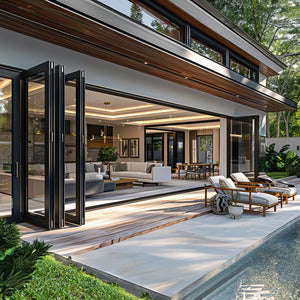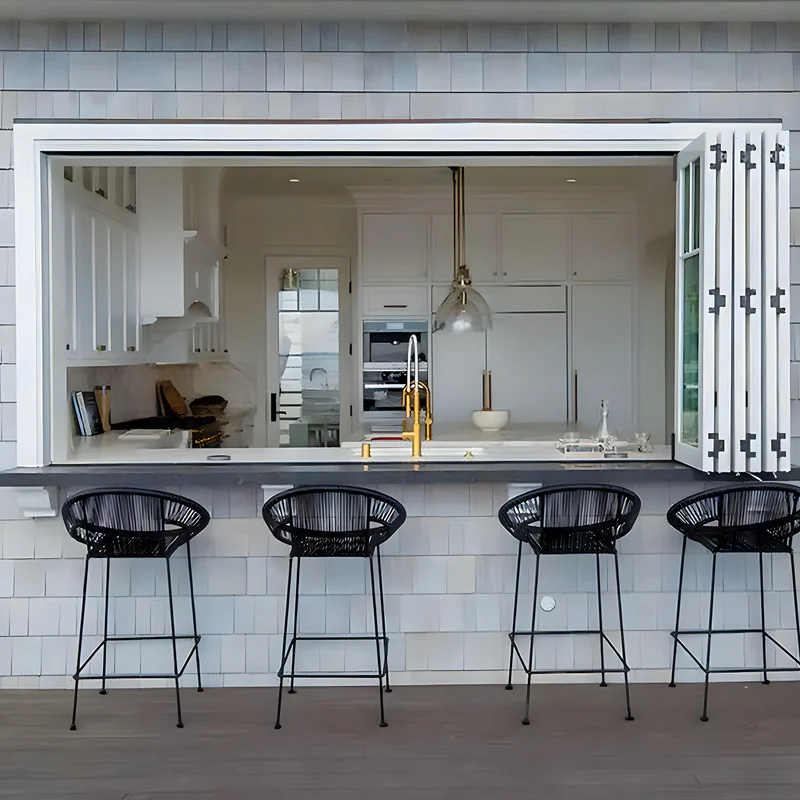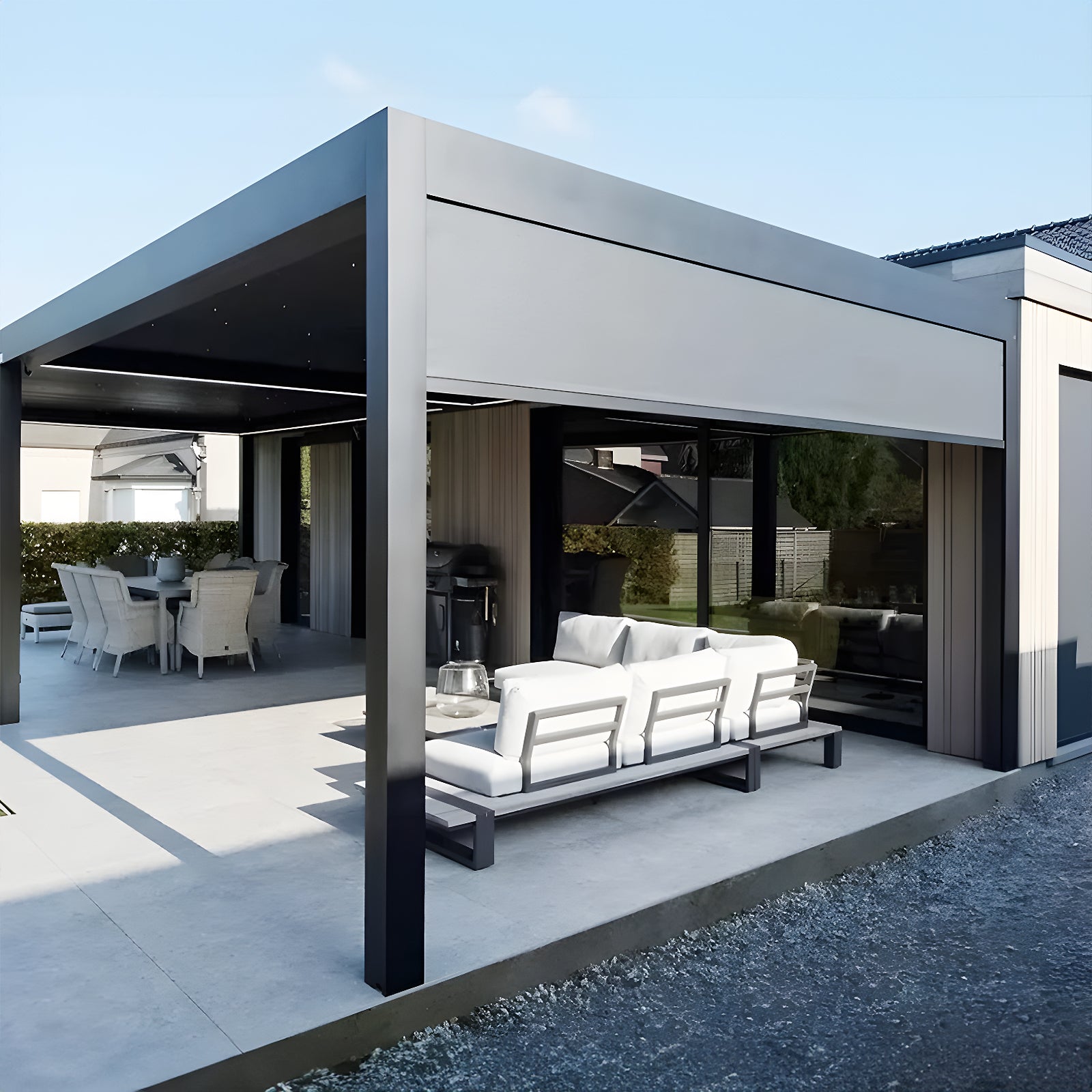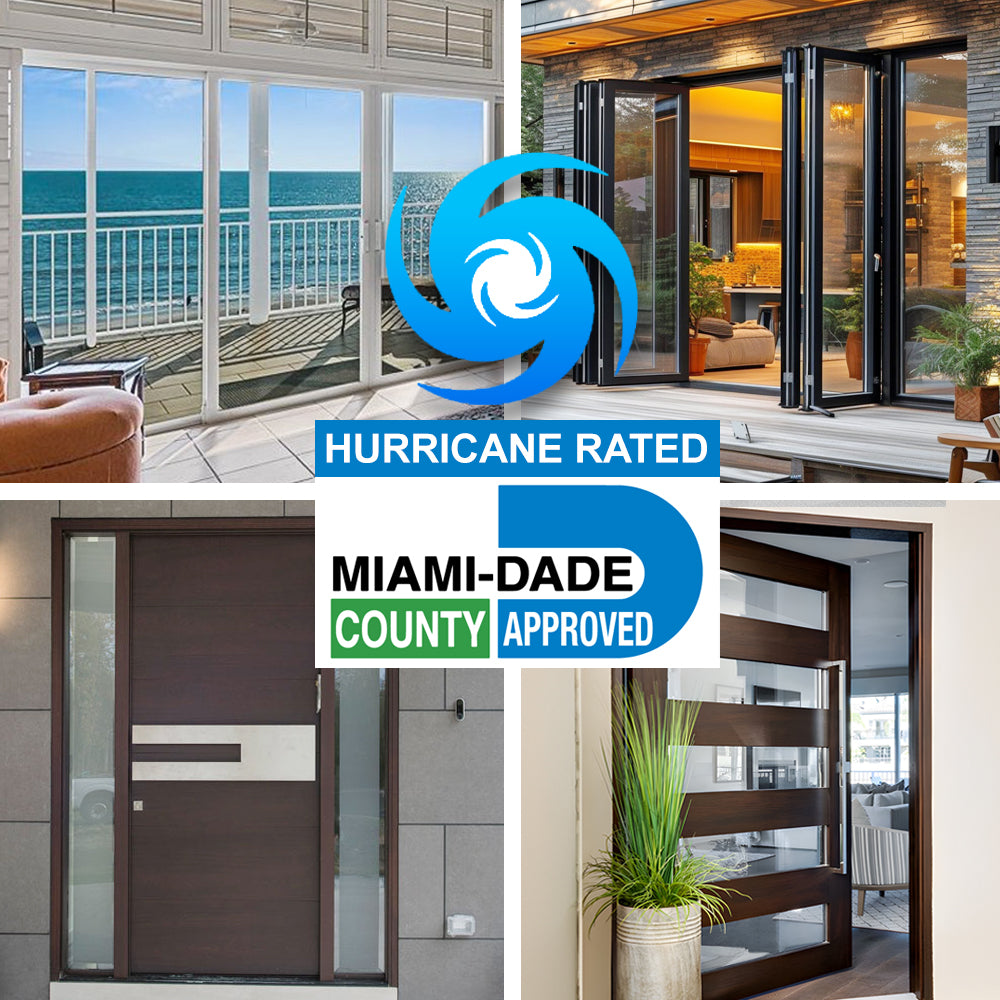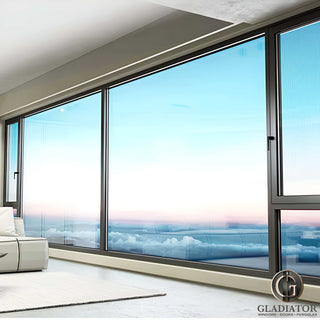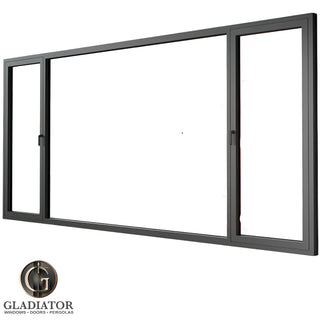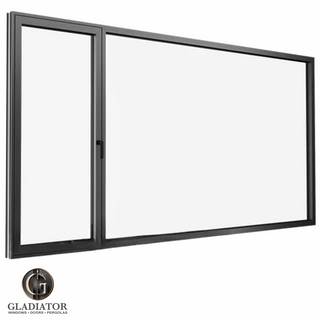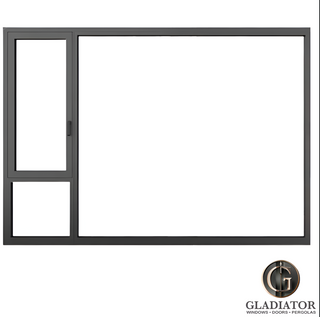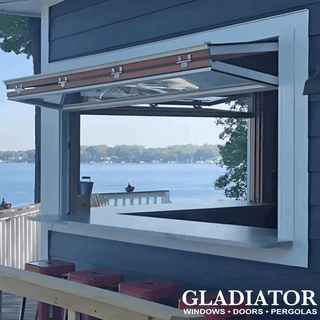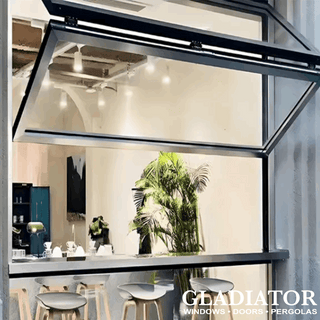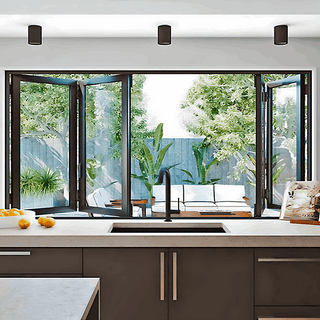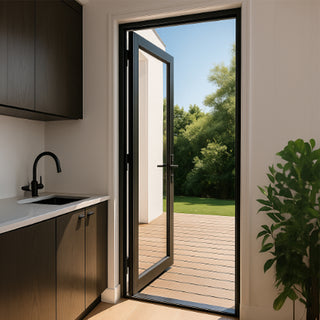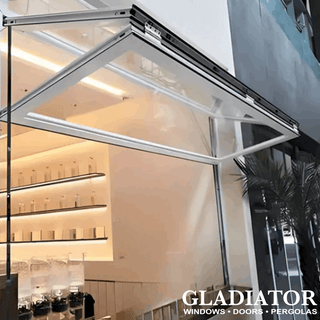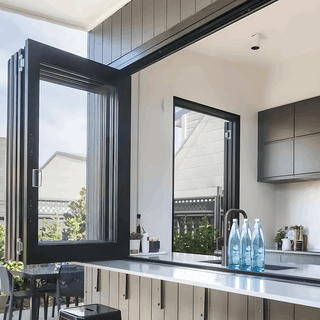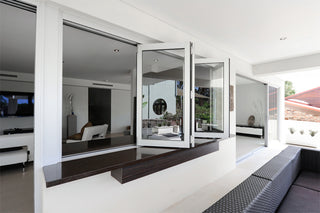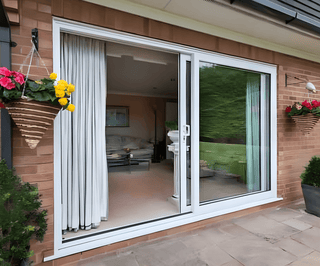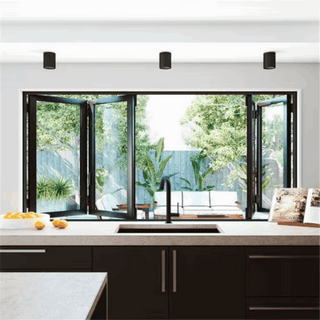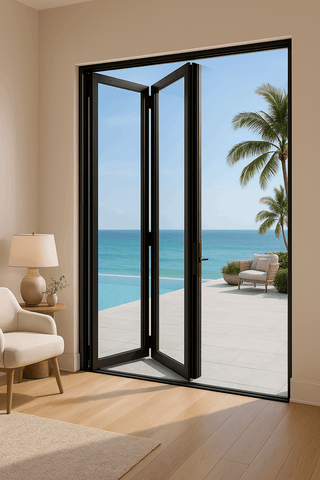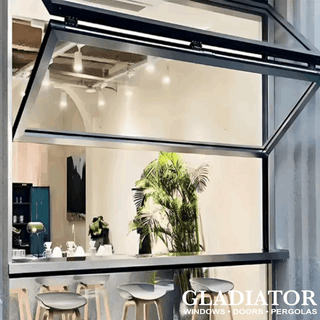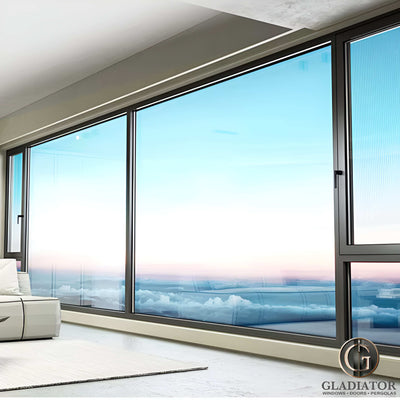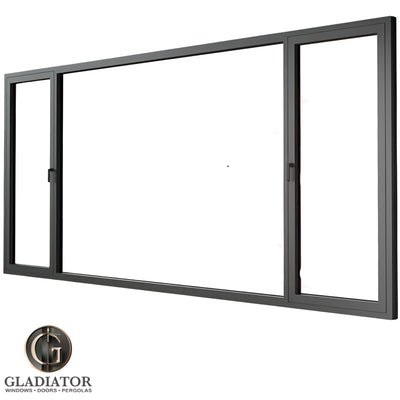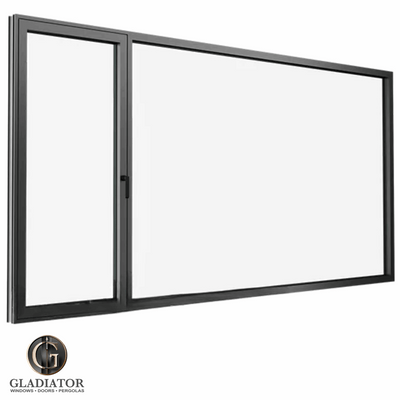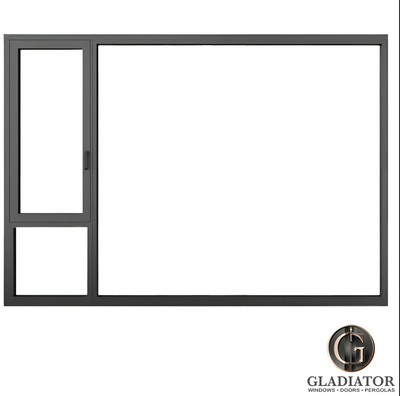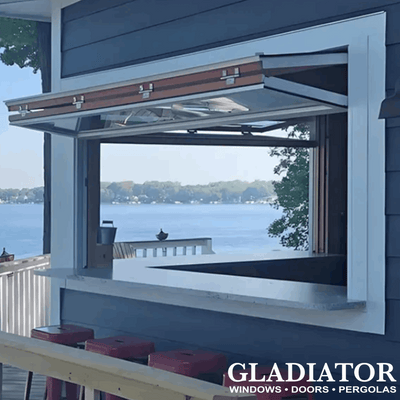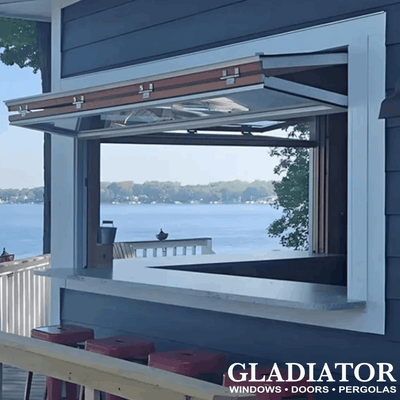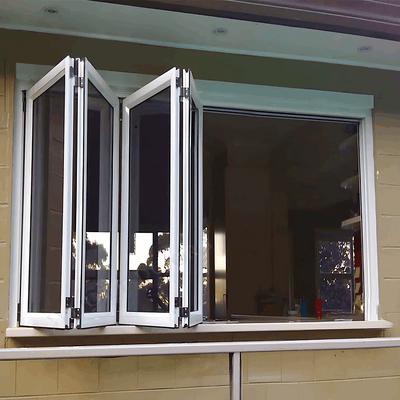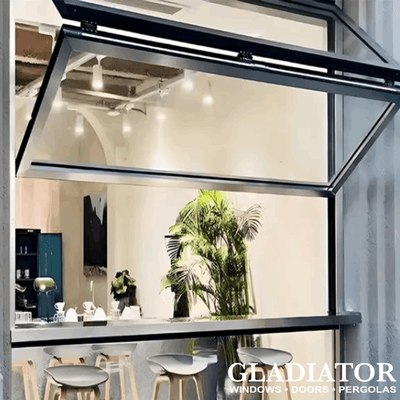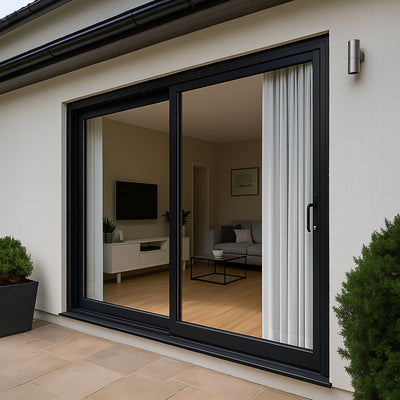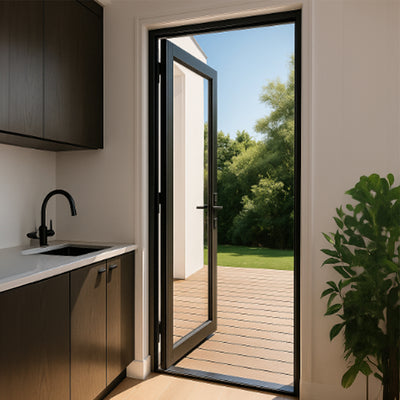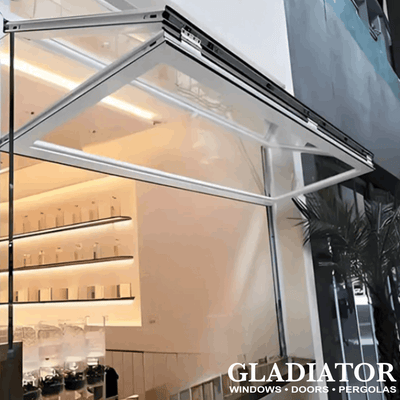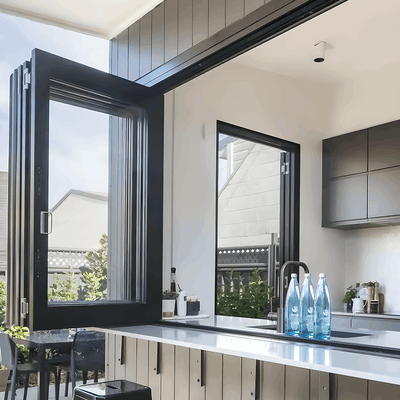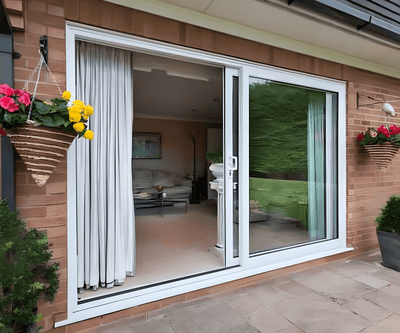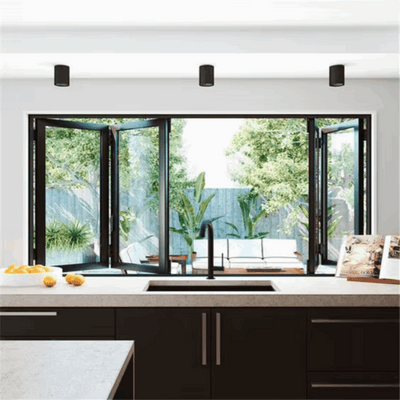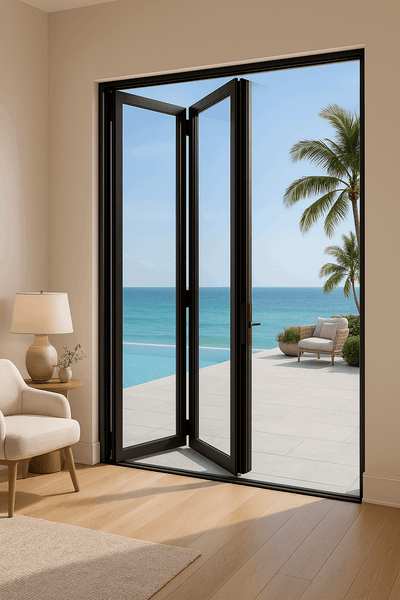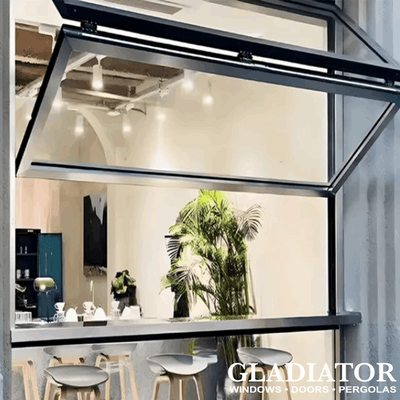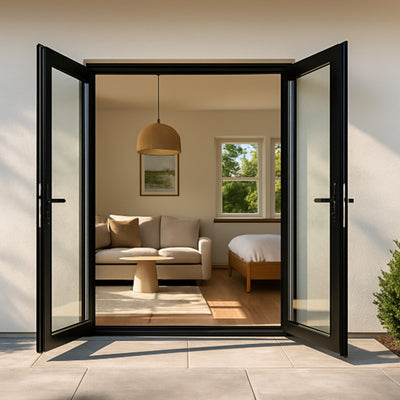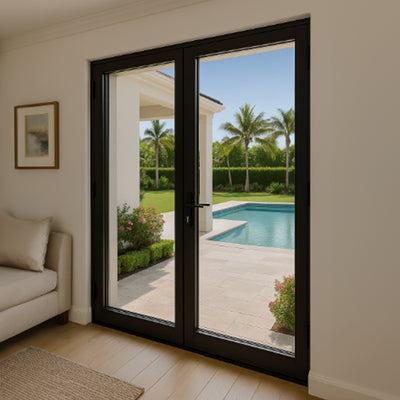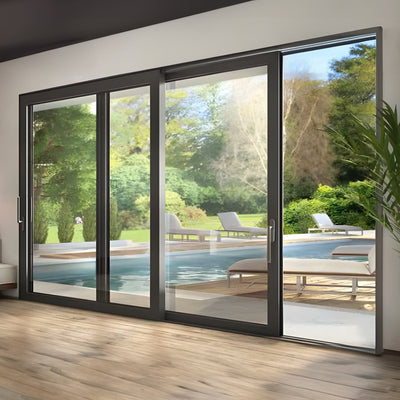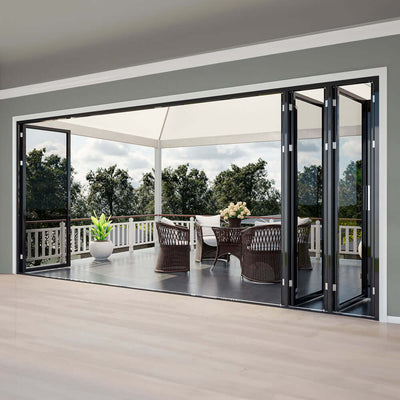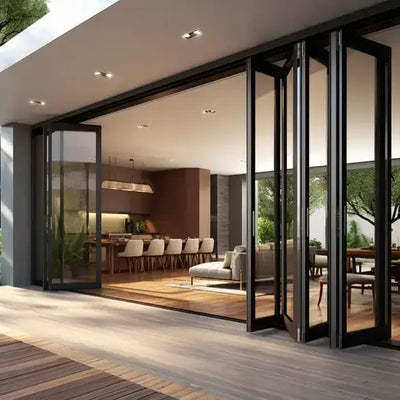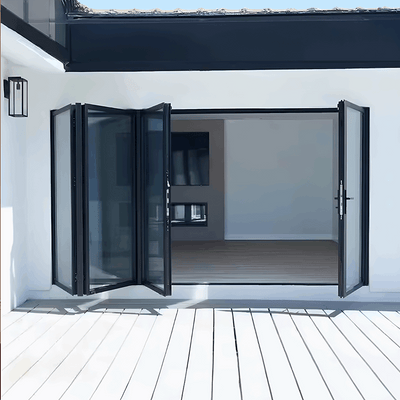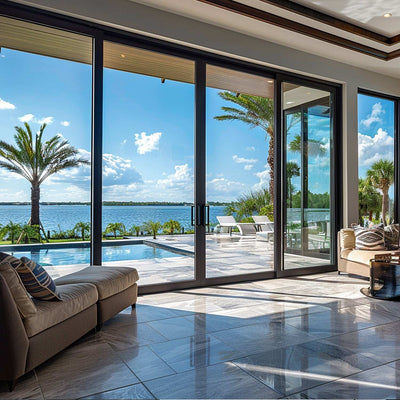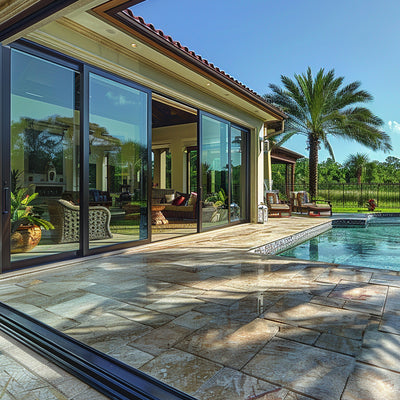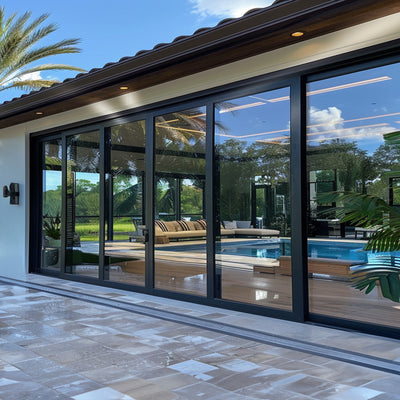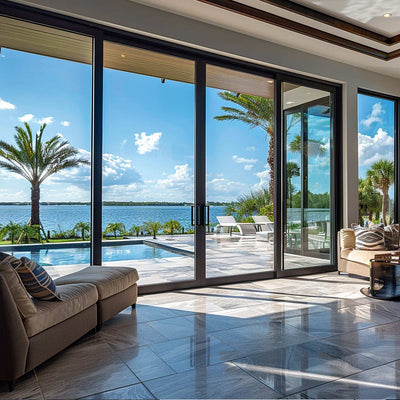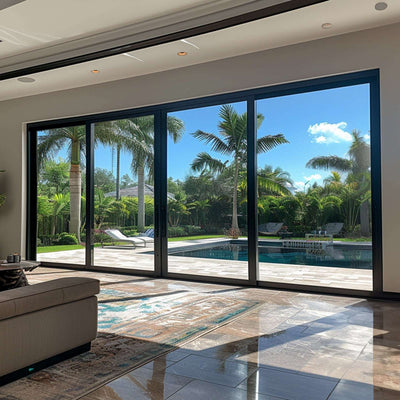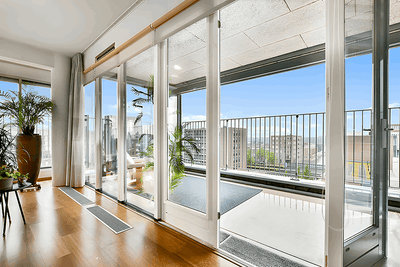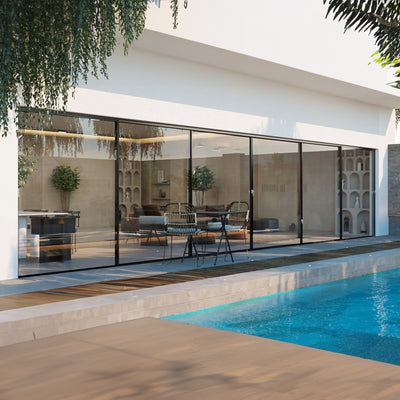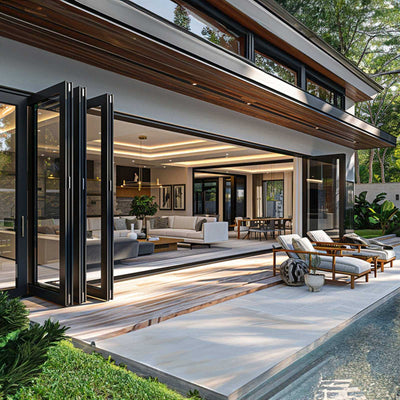Understanding New Construction Window Installation Fundamentals
New construction window installation differs significantly from replacement window installation. Instead of simply swapping old windows for new, it involves seamlessly integrating windows into the home's structure during the initial framing stage. This structural integration is crucial for long-term performance, weather resistance, and overall energy efficiency. It's the foundation upon which a well-insulated and weather-tight home is built.
Key Components for a Solid Installation
Two essential components in new construction window installation are nail fin frames and rough openings. Nail fin frames are extensions of the window frame designed for fastening directly to the wall studs. These fins act as anchors, securing the window and providing a solid base for subsequent layers. The rough opening, the framed space within the wall for the window, requires precise measurement. An incorrectly sized rough opening can lead to installation challenges and compromise window performance. It's all about ensuring a perfect fit.
Precise Measurements and Flashing: Preventing Future Problems
Experienced contractors know precise measurements for these elements are crucial. Even a small discrepancy can cause significant issues later. A slightly off-kilter window can create gaps, allowing air and moisture infiltration, leading to drafts, rot, and mold. Proper flashing techniques are also essential to prevent moisture problems. Flashing, a thin, waterproof material, is installed around the window opening to create a barrier against rain and snow, directing water away from the window and wall.
This attention to detail is especially important considering the growth of the window and door market, including new construction. The global market value surpassed £114 billion in 2020 and is projected to grow at a CAGR of 6.2% from 2021 to 2027. This growth is driven by increased demand for energy-efficient and sustainable solutions. For more statistics, see: Window Statistics. With rising demand, proper installation is more critical than ever.
Importance of Proper Installation During Framing
Proper new construction window installation during framing is essential for long-term success. This is when the window becomes integral to the building envelope, contributing to structural integrity and energy efficiency. For more on new construction projects, see our guide: How to Master New Construction Projects. Neglecting proper installation during this phase can result in costly repairs and reduced performance later. Diligence upfront ensures optimal window function and contributes to a comfortable, energy-efficient home for years to come.
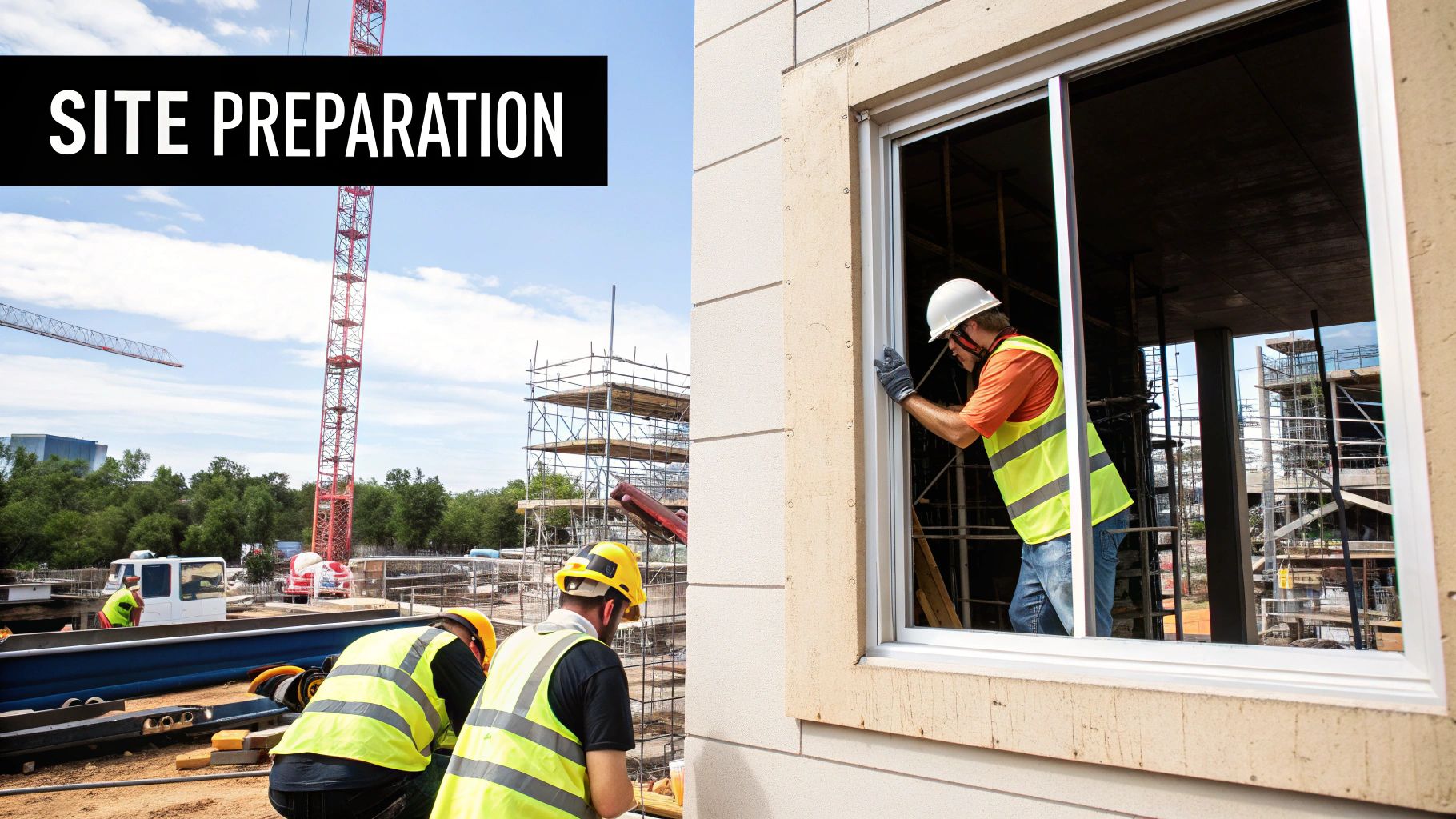
Choosing the Perfect Windows for Your New Construction
Selecting the right windows is a crucial step in any new construction project. This decision significantly impacts not only the aesthetic appeal of your home but also its energy efficiency, comfort, and overall value. From classic double-hung windows to expansive picture windows, the options can feel overwhelming. Let's explore the key factors to consider when choosing windows for your new build.
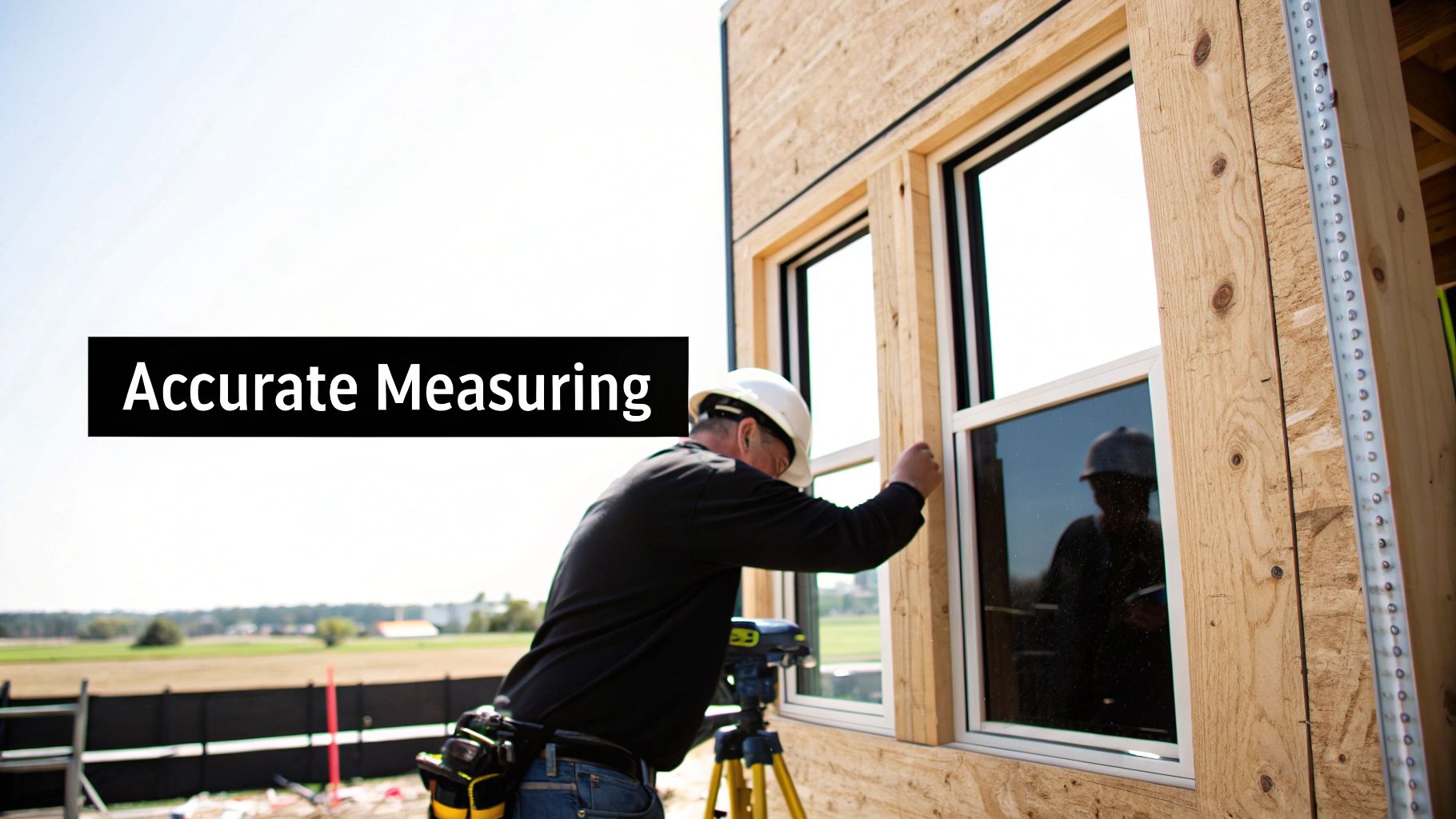
Matching Style and Functionality
The architectural style of your home should guide your window choices. For instance, a modern farmhouse might benefit from sleek casement windows, while a traditional colonial home might be better suited to double-hung windows.
Consider the functionality you want as well. Do you need maximum ventilation? Casement or awning windows offer excellent airflow. Prioritizing natural light? Picture windows or large fixed windows are ideal. Balancing aesthetics and functionality is key to making the perfect selection.
Frame Materials: Weighing the Pros and Cons
Window frame materials play a significant role in durability, energy efficiency, and maintenance requirements. Vinyl frames are a popular choice for their affordability and low maintenance. Fiberglass frames offer superior durability and energy performance but come at a higher price point. Wood frames provide a classic aesthetic but demand regular maintenance to prevent rot and decay.
To help illustrate the differences, let's take a look at a comparison table:
Window Frame Material Comparison: A detailed comparison of the most common window frame materials for new construction installations
| Material | Durability | Energy Efficiency | Maintenance | Cost Range | Lifespan |
|---|---|---|---|---|---|
| Vinyl | Good | Good | Low | Low to Moderate | 20-40 years |
| Fiberglass | Excellent | Excellent | Low | Moderate to High | 50+ years |
| Wood | Moderate | Moderate | High | Moderate | 30-40 years (with proper maintenance) |
As the table shows, each material presents different strengths and weaknesses. While vinyl offers a budget-friendly option, fiberglass stands out for its longevity and energy performance. Wood, while beautiful, requires consistent upkeep to maintain its appearance and functionality.
Glass Packages: Optimizing for Comfort and Energy Efficiency
Different glass packages greatly impact a home’s comfort and energy bills. Double-pane windows with Low-E coatings and argon gas fills are the industry standard for new construction, offering good insulation and reducing heat transfer. Triple-pane windows take energy efficiency a step further, which is especially beneficial in colder climates.
Considering your climate zone is crucial for selecting the right glass package. Small details, such as the spacer materials between the panes, can also affect long-term performance. These components play a vital role in preventing condensation and preserving the insulating gas fill over time. For more in-depth information, check out our guide on window and door products.
Climate Considerations: Tailoring Your Choices
Your location heavily influences your window selection. Homes in hot climates benefit from windows with Low-E coatings to reflect heat. Homes in colder climates require windows that maximize insulation. Coastal locations may necessitate impact-resistant glass to endure strong winds and airborne debris. Understanding your local climate conditions ensures your windows provide optimal performance and protection.
Choosing the right windows for your new construction is a worthwhile investment. Carefully considering factors such as style, frame material, glass package, and climate ensures your windows not only enhance your home's beauty but also contribute to its comfort, energy efficiency, and lasting value.
Step-by-Step New Construction Window Installation Mastery
The difference between a drafty, leaky window and a perfectly performing one often comes down to proper installation. This guide, based on the experience of seasoned professionals, walks you through the essential steps of new construction window installation. Understanding this process is vital for ensuring your windows are weathertight, energy-efficient, and function smoothly for years.
Preparing the Rough Opening: The Foundation of a Successful Installation
Before the window arrives, the rough opening—the framed space in the wall—needs careful preparation. This means ensuring it’s perfectly square, plumb, and level. It's the foundation upon which the window will sit. Accurate measurements are crucial, as even small errors can cause major issues later. You might be interested in: How to master sitemap....
Integrating House Wrap: Creating a Weathertight Seal
Next is the house wrap, essential for moisture control. The house wrap should be carefully cut and folded around the rough opening, forming a continuous barrier against the elements. This protects the framing and prevents mold growth.
Leveling and Shimming: Ensuring Smooth Operation and Weatherproofing
Proper leveling is crucial for both the function and weatherproofing of the window. The window is carefully set in the rough opening and secured with shims, small wedges that adjust the window’s position for a level plane. This meticulous leveling prevents sticking, ensures easy operation, and minimizes air leaks.
Flashing Techniques: Preventing Costly Water Infiltration
Flashing, a thin, waterproof material, is essential for preventing water infiltration. It's carefully installed around the window opening, creating a shield against rain and snow. Flashing directs water away from the window and wall, protecting the surrounding structure and interior finishes.
Insulation: Maximizing Energy Efficiency
Proper insulation around the window is key for energy efficiency. This minimizes heat transfer and prevents drafts, creating a more comfortable and efficient home. Expanding foam insulation is often used to fill gaps and seal the window. The Window Replacement and Installation Market has seen steady growth, driven by the demand for energy-efficient windows.
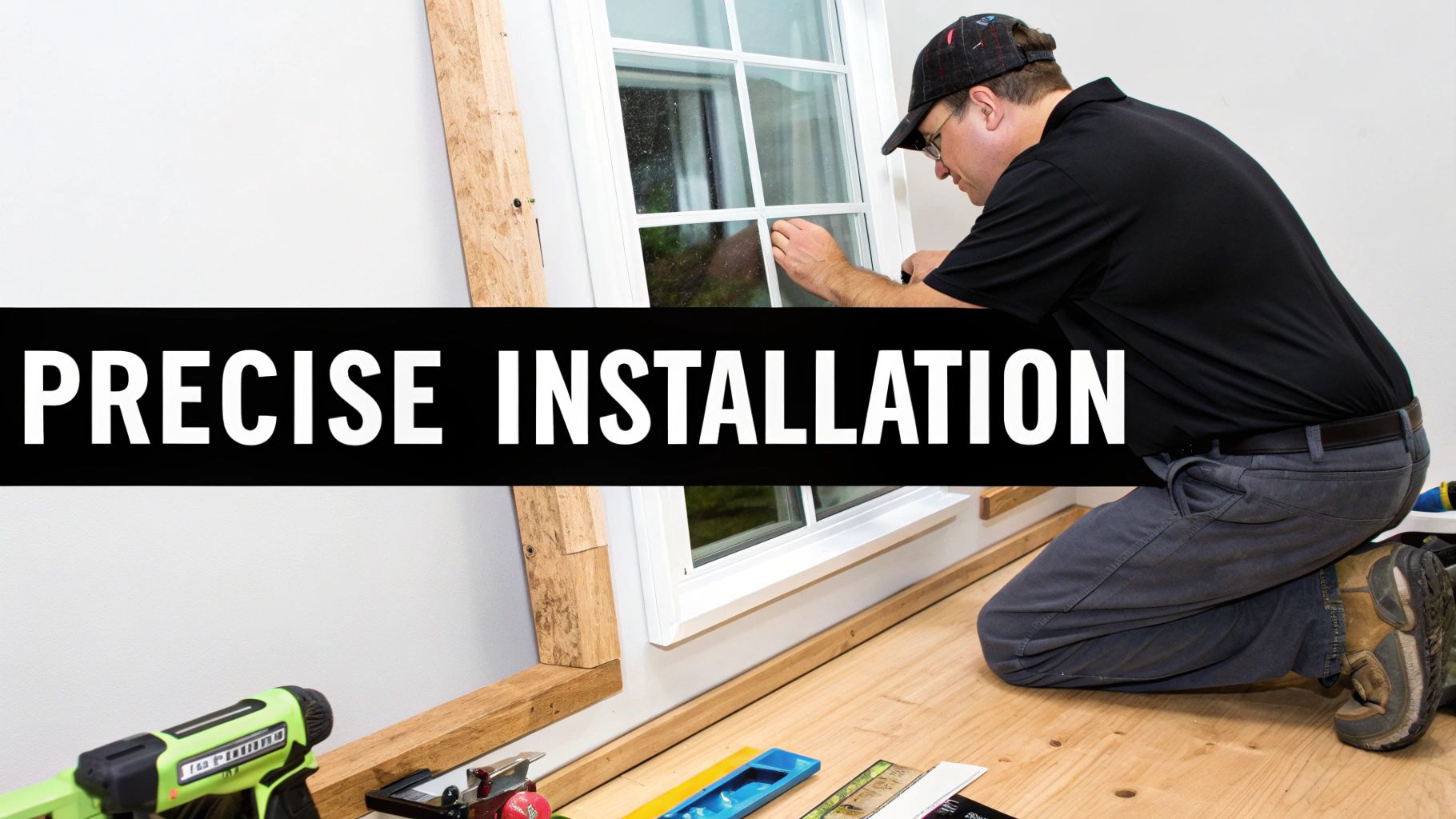
Troubleshooting Common Challenges
Even with careful preparation, issues can occur. Out-of-square openings require careful shimming and adjustments. Oversized windows need special handling for safe installation. These potential problems highlight the value of experienced installers who can handle these complexities and ensure a perfect finished product. Mastering these steps makes new construction window installation a crucial investment in your home’s comfort, energy efficiency, and value.
Maximizing Energy Performance Through Installation Excellence
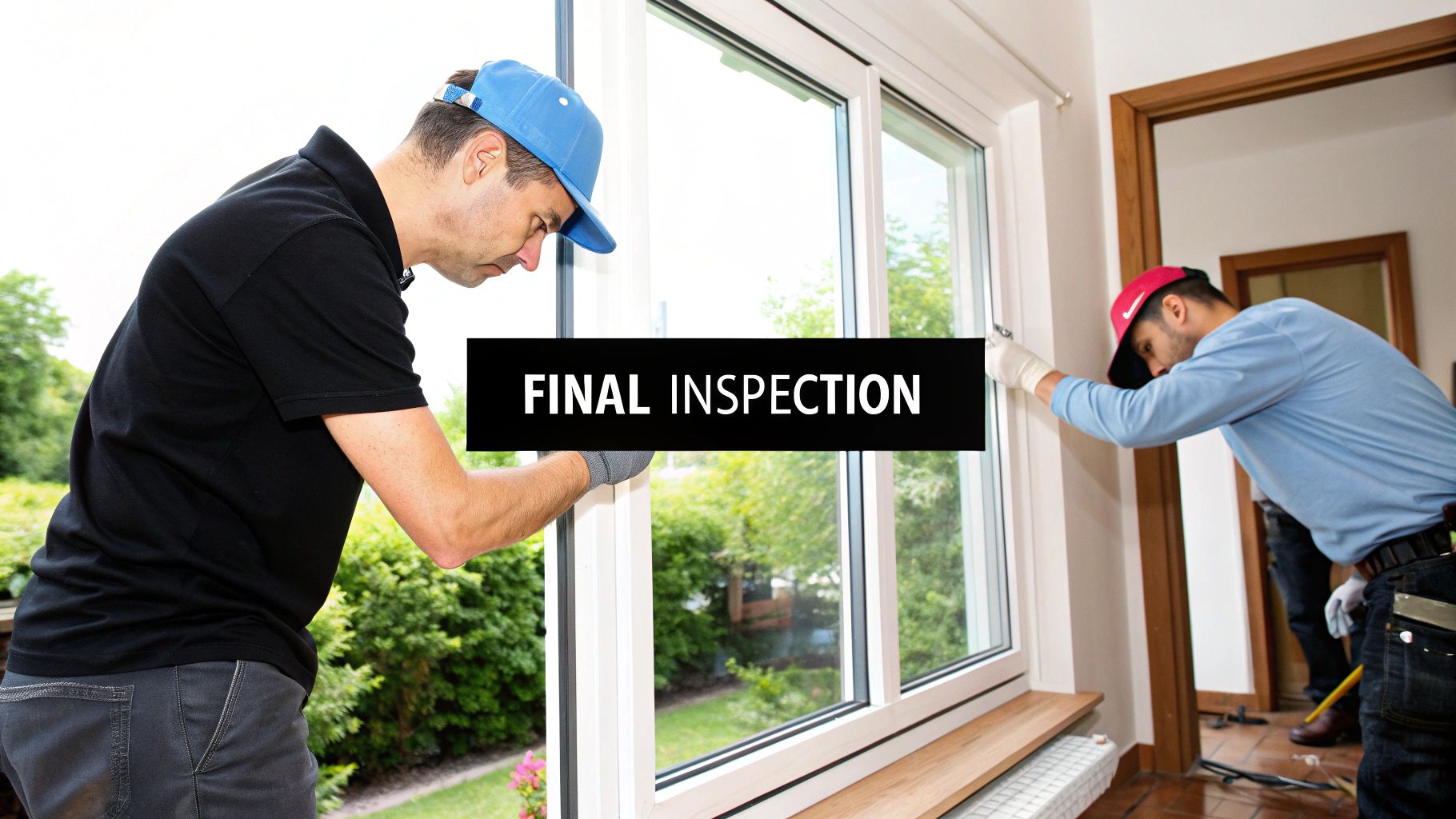
Even the highest quality windows can underperform if not installed correctly. Proper new construction window installation significantly impacts your home's energy efficiency and overall comfort. It's more than just placing a window in a hole; it involves understanding building science and careful attention to detail.
Air Sealing: Stopping the Invisible Drafts
A critical, often overlooked, aspect of window installation is air sealing. Small gaps around the frame can lead to significant energy loss due to air infiltration. Thermal imaging can be incredibly helpful in identifying these hidden drafts that increase energy bills and reduce comfort. Using quality sealants and expanding foam insulation around the window's perimeter creates a crucial airtight barrier.
Thermal Bridging: Keeping Heat Where It Belongs
Thermal bridging, the transfer of heat through the window frame, is another important factor. Different frame materials, such as aluminum, vinyl, or fiberglass, have varying thermal conductivity levels. Aluminum frames, for instance, conduct more heat than vinyl or fiberglass. Minimizing thermal bridging helps maintain consistent indoor temperatures and reduces energy waste. This can be achieved with specialized insulation designed for window perimeters.
High-Performance Flashing and Insulation
The market offers a variety of high-performance flashing and insulation products specifically designed for new construction window installations. These products exceed the performance of traditional materials, offering superior protection against air and moisture infiltration. This investment translates into long-term energy savings and lower maintenance costs. After choosing your windows, focus on correct installation. For a detailed process overview, check out this guide on cabinet installation techniques.
Moisture Management and Mold Prevention
Proper moisture management is key to preventing condensation and mold growth around windows. Correct flashing installation provides the first line of defense. Good ventilation and vapor barriers further control moisture and maintain a healthy indoor environment.
To illustrate the effects of proper installation, let's look at the following table:
Energy Efficiency Impact of Installation Factors
| Installation Factor | Potential Energy Loss | Proper Technique | Long-term Impact |
|---|---|---|---|
| Air Leaks | Up to 30% | Air sealing with sealant and expanding foam | Lower energy bills, improved comfort |
| Thermal Bridging | Up to 15% | Insulated window frames, thermal breaks | Consistent indoor temperatures, reduced energy waste |
| Moisture Infiltration | Damage to framing, mold growth | Proper flashing and ventilation | Prevents rot and mold, extends window lifespan |
This table highlights how proper techniques can significantly reduce energy loss and prevent long-term problems. Addressing these factors early in the installation process can have a major positive impact.
Green Building Certifications and Structural Integrity
Correct new construction window installation contributes significantly to achieving green building certifications like LEED and ENERGY STAR. These certifications acknowledge homes built with sustainable practices and high energy efficiency. Proper installation also impacts your home's structural integrity. A well-installed window strengthens the building envelope, protecting against the elements and ensuring lasting performance. For more information on window options, explore window collections. Prioritizing these installation best practices ensures a comfortable, energy-efficient, and durable home for years to come.
Regional Adaptations for New Construction Window Success
New construction window installation is a detailed process, far from a one-size-fits-all approach. Regional climates and specific building codes greatly influence the best practices for successful window integration. Much like a deep foundation is crucial in areas prone to frost heave, certain adaptations are essential for maximizing window performance and longevity across various environments.
Coastal Considerations: Weathering the Storm
Coastal areas present distinct challenges for new construction window installation. High winds, salt spray, and the potential for hurricane-force winds necessitate specialized approaches. Impact-resistant glass is often required, providing crucial protection against wind-borne debris. Secure anchoring systems are also vital for holding windows firmly in place against intense wind loads, preventing them from detaching during storms.
Extreme Temperatures: Managing Heat and Cold
Significant temperature fluctuations, from scorching summers to frigid winters, require specific attention to flashing and insulation. In hot climates, Low-E coatings help reflect heat away from the home, reducing cooling costs. For colder regions, maximizing insulation around the window frame is critical to prevent heat loss and minimize drafts. This often involves specialized insulation products designed specifically for window installations.
Humidity and Moisture: Preventing Damage and Decay
Humid environments require robust moisture management strategies. Correct flashing techniques are essential for preventing water infiltration and subsequent damage to the wall structure. Proper ventilation around the window also helps to reduce condensation and the possibility of mold growth, preserving the integrity of both the window and the surrounding materials. For additional information on related topics, explore our collection of blog posts.
Regional Building Codes and Energy Efficiency Standards
Regional building codes heavily influence new construction window installation. These codes specify requirements for window performance, including energy efficiency ratings and structural integrity. Compliance with these codes ensures proper installation and optimizes the benefits of your window investment. Many regions also provide incentives for meeting or exceeding local energy efficiency standards, potentially offsetting some initial project expenses. It's worth noting that the window installation market has shown regional variations in success. The Southeast United States, for instance, has historically performed well, influenced by factors like population density and economic conditions affecting new construction demand. Learn more about this industry.
Architectural Traditions and Regional Aesthetics
Regional architectural traditions often impact window selection and placement. Historic districts, for example, frequently have specific guidelines for window styles and materials to preserve the area's architectural character. Understanding these regional aesthetics allows builders to seamlessly integrate windows, maintaining the home's unique character while maximizing performance. Successful builders recognize that adapting standard new construction window installation methods to regional conditions is key for achieving optimal results. By addressing the specific challenges of each environment, they ensure the windows contribute to the home's comfort, energy efficiency, and lasting value.
Smart Budgeting for New Construction Window Projects
Building a new home comes with a whirlwind of decisions. Among them, budgeting for new construction window installation stands out as particularly important. It's tempting to fixate on the initial price tag of the windows, but the true cost encompasses a wider range of factors. For a deeper dive into project expense management, check out these budgeting insights. Grasping the full scope of expenses allows for a realistic budget and prevents unforeseen costs later on.
Unforeseen Expenses: Looking Beyond the Window Price
Many builders fall short in estimating the total cost of new construction window installation by neglecting hidden expenses. These often include specialized flashing materials crucial for preventing water damage, appropriate insulation to optimize energy efficiency, and the extra labor required for complex installations. Neglecting these additions can easily throw your budget off track.
Installation Methods: Standard vs. Premium
Your chosen installation method significantly affects the final cost. Standard installation generally covers basic placement and sealing. Premium installation, on the other hand, often incorporates advanced techniques like custom flashing, enhanced insulation, and meticulous air sealing. This results in higher upfront costs but leads to better long-term performance and greater energy savings. This initial investment can yield returns over time through lower energy bills and fewer future repairs.
Energy Rebates and Incentives: Offsetting Initial Costs
Many regions provide energy rebates and tax incentives for new construction projects using energy-efficient windows. These programs can considerably offset the initial investment in high-performance windows, making them a more financially appealing choice. Investigating available rebates and incentives in your area can reveal valuable ways to save money while improving your home's energy efficiency.
The Cost of Compromising Quality
While budget limitations are a reality for most projects, skimping on window quality can create expensive issues in the future. Lower-quality windows are more prone to air leaks, condensation, and early failure. This translates to higher energy bills, decreased comfort, and the need for costly repairs or replacements. Investing in quality windows upfront is a financially sound decision, providing superior performance, durability, and long-term value.
Evaluating Contractor Bids and Window Prices
When assessing contractor bids, don't just focus on the final price. Compare the scope of work, the materials used, and the contractor's experience. The lowest bid isn't always the best deal if it sacrifices quality or skips crucial details. Understanding typical price ranges for various window types allows you to make informed choices and avoid overspending.
Making Informed Investment Decisions
Effective budgeting involves recognizing where extra investment truly adds value. Upgrading to high-performance glass packages or premium installation techniques can provide substantial long-term advantages in energy savings and comfort. Conversely, some upgrades, like decorative elements, might primarily enhance aesthetics without significantly improving performance. Carefully weigh which investments align with your needs and offer the best return in terms of functionality and lasting value.
Ready to explore high-quality, affordable windows and doors for your new construction project? Visit Gladiator Window and Doors today to see our wide selection of custom-made, thermally rated products. We offer extra-large sliding doors, pivot doors, bi-fold doors, panoramic doors, and folding windows, along with fully loaded pergolas. We have the lowest prices in the USA, guaranteed by our Best Offer Guarantee. Don’t overpay – get the best value for your investment with us!








